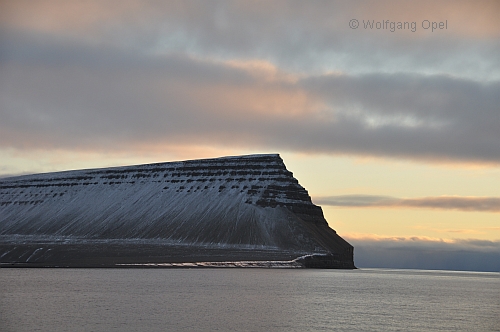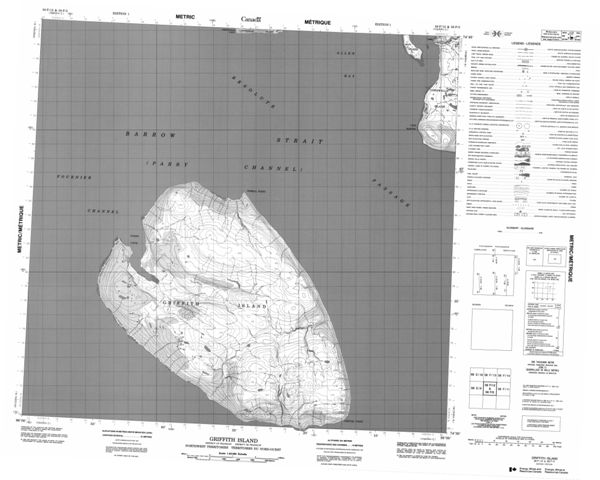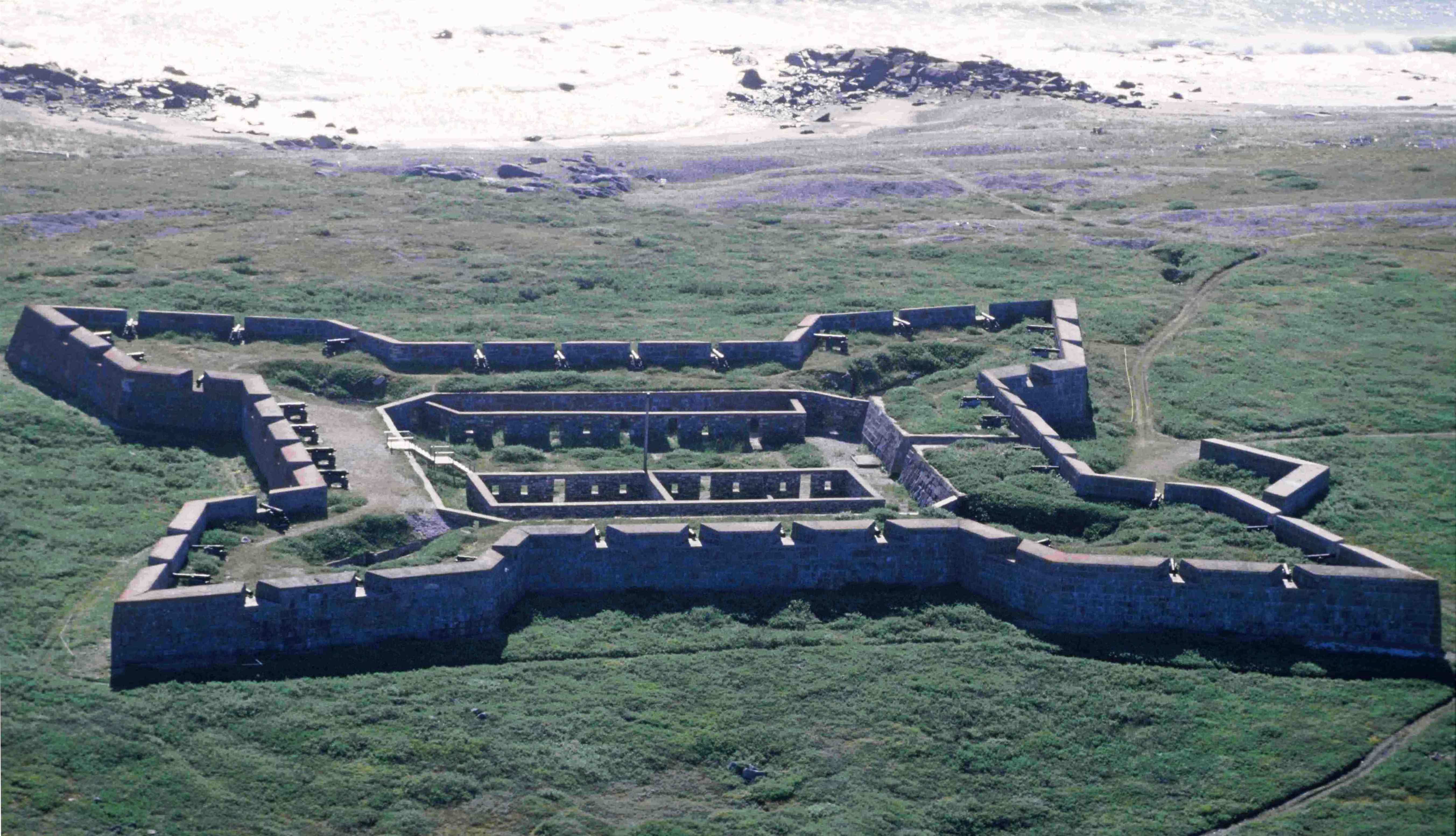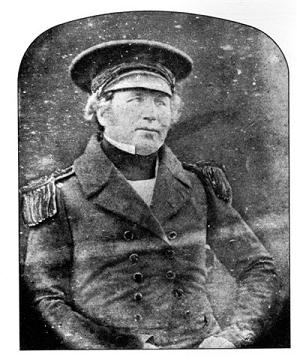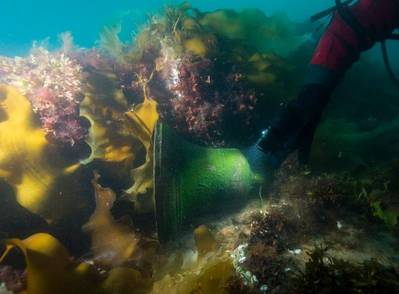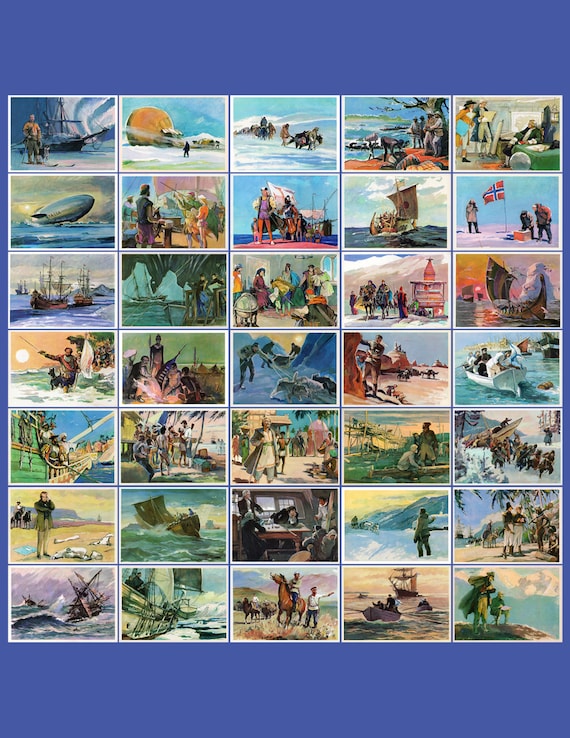Several have been the expeditions which reached the shores of Port Leopold during the nineteenth century, time before and after the last Franklin expedition had departed. But only one of them left an indelible print on it. There, one of the biggest graveyards was deployed during the long winter of 1848-49.
The Arctic again shows us what kind of toll he charges to those who dare to get into him. Not for nothing Barry Lopez describes in his book "Arctic Dreams" the northern American Arctic of 1823 in this way:
The Arctic again shows us what kind of toll he charges to those who dare to get into him. Not for nothing Barry Lopez describes in his book "Arctic Dreams" the northern American Arctic of 1823 in this way:
"...as distant as fable, inhabited by remarkable animals and uncontacted people,... A landscape of numinuous events, of a forgiving benediction of light, and a darkness so dunning it precipitated madness, of a cold that froze vinegar, that fractured whatever it penetrated, including the stones.
It was uncharted, unclaimed territory, and Europeans had perished miserably in it ...gangrenous with frostbite, poisoned by polar bear liver, rotted by scurvy, dead of exposure on the ice beside the wreckage of a ship burned to the water line for the last bit of its warmth"
Port Leopold is a perfect natural harbour which mouth faces south. It is located at the mouth of Prince Regent inlet in its west shores. Together with its simetrical brother located northward, Rodd´s bay, they form an istmus which leads to a small peninsula called Cape Clarence. On it there is a flat hill whose steep slopes dominate the bay. McClintock describes it as a astonishing bare land more barren than Beechey island.
There is no better way to find detailed information about the geography of these remote locations than consultating the "Canmaps" website:
There is no better way to find detailed information about the geography of these remote locations than consultating the "Canmaps" website:
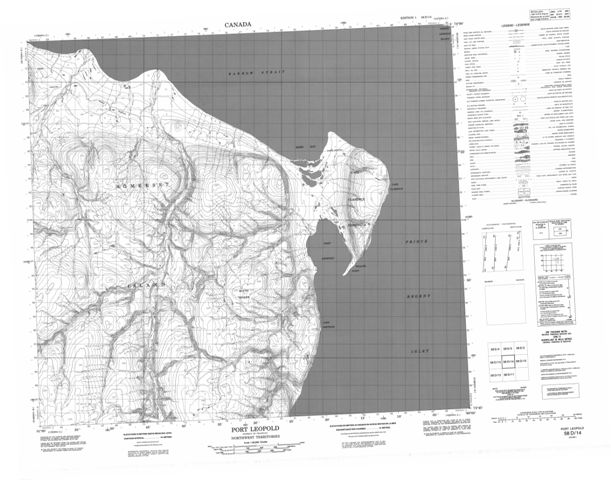 |
| Clarence Peninsula, Port Leopold, Rodd´s bay. http://www.canmaps.com/topo/buy-topo-maps/waterproof-paper/50k/058d14.htm |
The hill forms an excellent viewpoint over Barrow strait. According to some accounts of the time, Beechey Island, located 100 km northwest, could have been even visible in clear days. Randall Osczevsky, suggests that big cairns built over the hill on Beechey Island could have served for mapping and triangulation from Port Leopold. This has sense since Ross sent sledges parties to the north shore of Barrow strait, if they reached it or if they didn't itis not clear to me . It could be. Anyway, lots of cairns were built over the hill on Cape Clarence. Some of them carried messages inside, the content of a particular one was quite surprising as we soon will see.
A distinct geographical feature makes of Por Leopold an unusual propicious harbour for wintering. At its entrance a strip of land called Whaler point closes part of the mouth of the harbour protecting it from the fury of the sea ice, but, it is this same particular distinction which makes of Port Leopold a capricious harbour which offers its gates some times open some times closed. Through its doors some expeditions found a providential place to winter, others were simply forced to do it.
During the second voyage of John Ross from 1829 to 1833, the crew of the abandoned Victory waited here unsuccessfully to be rescued the summer of 1832 and again, this time succesfully, a year after in 1833. John Ross called this place South Leopold Island, surely unaware that the port and cape Clarence were part of the big Sommerset island, in fact for Ross it should have formed part of the mainland, given that he had missed Bellot strait during the expedition. John Ross describes what was seen from the top of the hill:
"From the summit of the lofty mountain on the promontory we could see Prince Regent´s inlet, Barrow´s strait and Lancaster sound which presented an impenetrable mass of ice just as I had seen in 1818"
A distinct geographical feature makes of Por Leopold an unusual propicious harbour for wintering. At its entrance a strip of land called Whaler point closes part of the mouth of the harbour protecting it from the fury of the sea ice, but, it is this same particular distinction which makes of Port Leopold a capricious harbour which offers its gates some times open some times closed. Through its doors some expeditions found a providential place to winter, others were simply forced to do it.
During the second voyage of John Ross from 1829 to 1833, the crew of the abandoned Victory waited here unsuccessfully to be rescued the summer of 1832 and again, this time succesfully, a year after in 1833. John Ross called this place South Leopold Island, surely unaware that the port and cape Clarence were part of the big Sommerset island, in fact for Ross it should have formed part of the mainland, given that he had missed Bellot strait during the expedition. John Ross describes what was seen from the top of the hill:
"From the summit of the lofty mountain on the promontory we could see Prince Regent´s inlet, Barrow´s strait and Lancaster sound which presented an impenetrable mass of ice just as I had seen in 1818"
Whaler's point - Picture by Wolfgang Opel
From Trimaris blog post: Retreat at Whaler's point.
What John Ross doesn´t mention in his narrative is that he left on the top of the hill a tin case under a pile of stones with a poem on it. The poem was never found so it may perfectly be still there. A transcription of it was forwarded by him to Barrow. The poem reads as follows:
"Far as the eye can reach and all around
Is one vast icy solitude profound
On snow-clad ground in silent stillness, sleep
The weary crew, no shooting vapours steep
The rocks with freshness, not an herb is there,
Nor shrub, nor bush, but, desolate and bare,
It seems as if these regions, by the will
Of Heaven transfix´d, had all at once stood still;
And the proud waves, beneath the fatal blow,
Had spread into a field of lifeless snow".
John Ross sept 1832
John Ross, the man who survived four winters in the Arctic, the man who amputated the arm of his engineer, was a poet too. The eventful journey of John Ross during all those years didn´t leave any grave on that place, the only thing he buried there was some poetry. However, James Ross's expedition of 1848-49 in the ships HMS Enterprise and HMS Investigator, which reached this place fifteen years after and which counted with the presence of famous explorers like Leopold McClintock and Robert McLure, left a very different mark on those remote grounds. No less than six graves, one belonging to an officer and the others to five men.
 |
Remarkable Appearance in the Sky Always Opposite the Sun during the Arctic Expedition of Her Majesty's Ships Enterprise and InvestigatorBy: William Henry Browne |
Who could have told Ross´s nephew he was going to beat all the records regarding of Arctic expedition's casualties. James C. Ross have been praised here and there specially when compared with his uncle. James C. Ross was more able, cleverer, stronger and of course more handsome, thaat could be true but James lost seven men in a single winter (six of them buried in Leopold Island, another during the homeward journey) while John Ross lost only three men in four winters. To me mathematics wins. This was not his only indeleble mark in the place, he also left a permanent signature which still last:
 h h |
| Picture taken by Roger B. Swanson http://www.sailingbreezes.com/sailing_breezes_current/articles/July06/intoice4.htm |
Again arctic exploration history reminds us how fragile is the balance
between death and life. I have read and listen in books and
documentaries how some historians amaze about the high rate of casualties of
the Franklin expedition during its first winter. It has been
demonstrated that those who assert this have not taking into account the whole picture. The four graves from James Saunder´s expedition dug during
the 1849-50 winter in North Star Bay is enough proof by itself, but if even so, someone is still exceptic, the six graves of Port Leopold should make the things clearer.
It is from the book "A whaling cruise to Baffin´s bay and the gulf of Boothia" by A.H. Markham, (thanks Peter Carney for this reference), where we can find a description and some detail about this, not so tiny, graveyard. On it are described the six graves at the head of the harbour. The precise location is not mentioned but we could assume they must be located not too far from the cabin which James Ross built during that winter. The graves likely must be located at the foot of the steep slopes of the hill in Cape Clarence, in the east side of the bay.
The officer buried there was Henry Mathias, assistant surgeon of the Enterprise, he died the 15th of june of 1849, aged 27. According with the official accounts he died from consumption combined with some other disease that had deeply rooted his constitution even before leaving England. Always the same tale and that could be all for explaining his death but, in this case, from another source, the life of Admiral Sir Leopold McCLintock, I could gather some extra information which put some more light to the event of his death.
Henry Mathias participated in an apparent inoffensive race organised to see the returning sun the day 27th of february. A short but steep ascent of 800 ft (234 m) to the summit of the hill in Cape Clarence.
The race was won by Mr. Court who carried a scraper in each hand, so imagine how steep was the slope, the temperature was -49 F. According with the reference, that was a cheering event which was soon shadowed by the fact that Mathias began to split blood and to lose strength. Though there was no official published account about this expedition, from McClintock´s journals some last words dedicated to this poor man have survived:
Henry Mathias participated in an apparent inoffensive race organised to see the returning sun the day 27th of february. A short but steep ascent of 800 ft (234 m) to the summit of the hill in Cape Clarence.
 |
| Terraces in Port Leopold - Picture by Mechtild Opel From Trimaris blog post: Retreat at Whaler's point. |
"In him, I have lost such an excellent friend as I can hardly hope to meet with again. He possesed a very rare combination of ability of the highest order, with sound practical sense and knowledge of the world. He was well read on many subjects, and he was so full of good nature that he was at all times ready to assist, explain, or impart knowledge to those who sought his aid. As a companion he was most animated and agreeable, and he was ageneral favourite on board."
McClintock words rescue a character from the expedition who would have been otherwise forgotten forever, as it usually happens with the tens of men who participated in such expeditions but survived to tell their story. Death is the common price you have to pay for being remembered with kind words as some sort of martyr, though this is not an infallible rule.
Though likely these two mentioned diseases were the actual reason which killed Henry, it surely was the effort made during the race which provoked the final and fatal collapse. Knowing as they knew he was a sick man, Why did Henry participate on that race?, the possible answer is beyond my understanding. Being ill as he was, and being assistant surgeon as he was does even more difficult to understand why he took such decission and what is more why the rest of the officer staff let him run. I guess that this will be one mistery more to add to our pile of Arctic expedition's related mysteries.
The graves of the rest of the men buried in Leopold Harbour belong to: James Grey, David Jenkins and Erward Binskin, all of them seamen from the Enterprise. The two remaining belong to William Grundy (or Cundy) and Thomas Coombs from the Investigator. Only the death of David Jenkins must be attributted to an accident, a fall, the rest were provoked both for consumption or for scurvy. The inscriptions were engraved on brass plates nailed to their head boards, but it is the grave of Thomas Coombs, who belonged the carpenter´s crew, which will attrack our attention over the rest and which will make us shiver a bit. At the foot of his grave, there was a bottle with a paper inside with these words on it:
"Near this spot lay the remains of Thomas Coombs, ..., who died on board that ship (Investigator) on the 27 th day of October, 1848, after a lingering illness of three months, which he bore with Christian fortitude. And I sincerely hope, should any Christian dall in with this, that he will leave his body rest in peace and undisturbed, and oblige his late chum and messmate Charles Harris, A.B."
Leave his body rest in peace and undisturbed, curious selection of words for a final farewell. Why mentioning particularly this? Was a general practice of the participants on Arctic expeditions violating or spoiling graves, I seriously doubt it. Was a general practice digging graves to practice authopsies in corpses of other expeditions? With what purpose? The only case I know, and which has sense, was that one performed concealed during the night by one of the surgeons of one of the 1850's rescue expeditions after Franklin in one of the graves of Beechey island.
Why then remarking such obscure point in that note? Was it a warning for what could happen in a far future?. This warning is especially distressing taking into account that men were buried wearing only a shirt and perhaps with some luck a pair of trousers, (as was demonstrated by the possesions found together with the three men buried in Beechey Island). Besides, according with one of the crew member´s, (W. Brett), journal, Thomas Coombs belongings were sold after his death as it was common practice:
Why then remarking such obscure point in that note? Was it a warning for what could happen in a far future?. This warning is especially distressing taking into account that men were buried wearing only a shirt and perhaps with some luck a pair of trousers, (as was demonstrated by the possesions found together with the three men buried in Beechey Island). Besides, according with one of the crew member´s, (W. Brett), journal, Thomas Coombs belongings were sold after his death as it was common practice:
Novr 6th Employed as on Saturday fetching Gravel and in afternoon Sold by auction the Effects of Tho Coombs Issued Soft bread for the first time which will continue during... "
William Kennedy´s account of his voyage in the Prince Albert during the years 1851 and 1852 , doesn´t offer further details about these six men, he only describes the state of Ross´s cabin and the contents of the cilinders left there. As there is not official account from Saunders from the North Star expedition of 1850, we can't know if they stumbled upon these six graves. Lady Franklin and Sophia ships arrived here too but the same happens. McClintock returned ten years after in 1858, but, despite his kind words produced during the 1848 expedition, this time, he didn't waste a single phrase in his account "The voyage of the Fox in the Arctic seas"about neither Mathias nor about the graves.
As I said before, there are no official accounts about this journey, only a couple of articles, this piece of news from Geelong Advertisement and the references you can find in other narratives of the time. Interestingly in "The English at the North Pole" Jules verne review quickly which expeditions stopped in the desolated beaches of Port Leopold, a privileged index to follow in case of needing further information.
There are graves in Port Leopold but surely they belong to whalers, trappers or trade men from the Hudson Bay Company. I want to think that graves usually call other graves, so perhaps not far from the buried men who appears in the picture below, are buried the remains of the main characters of this blog post, so, therefore, perhaps, they wouldn't be lost forever.
 | |||
| http://www.umanitoba.ca/libraries/archives/exhibits/taylor/graves.html |
Trappers graves at Port Leopold, Somerset Island
If you Google Port Leopold or Whaler's point you don't find hundreds of pictures. I am grateful on counting with a couple of friends who not only were there but they took very nice pictures of the place too. They have allowed me to share them here to dress a bit my post. You, reader, shouldn't miss their blog. Thanks Wolfgang and Mechtild.
Acknowledgement: Jonhathan Dore, Peter Carney, Mechtild and Wolfgang Opel, Randall Osczevsky.

